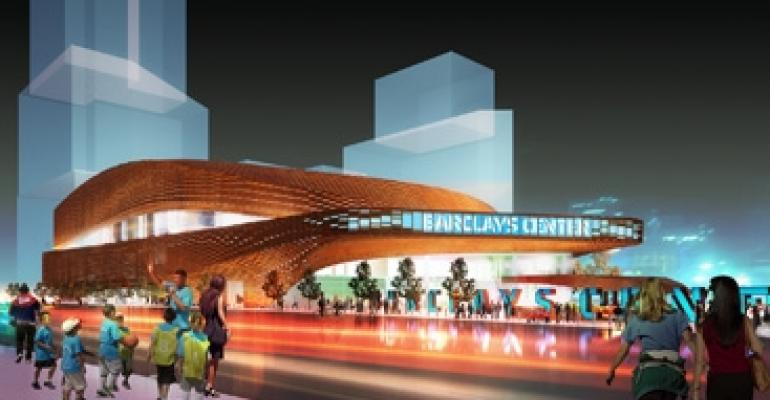
The New York Court of Appeals, in a 6-1 decision, has ruled that the state can seize from private owners the remaining land needed for developer Bruce Ratner’s massive mixed-use project, Atlantic Yards in Prospect Heights, Brooklyn.
“It is indisputable that the removal of urban blight is a proper, and, indeed, constitutionally sanctioned, predicate for the exercise of the power of eminent domain,” wrote Chief Judge Jonathan Lippman in the majority decision handed down Tuesday.
Ratner, CEO and chairman of Brooklyn-based Forest City Ratner Cos., had already purchased 85% of the land needed to complete his 22-acre, $4 billion development in downtown Brooklyn. The ruling allows the state to take the remaining 15% of land needed to break ground on construction.
The first phase of the proposed project includes a sports arena to house the NBA Nets franchise, as well as infrastructure improvements to the Vanderbilt Yards rail facilities and upgrades to the subway hub located at the site.
Barclays and eight other companies have signed on as founding partners for the arena called Barclays Center, an 18,000-seat sports and entertainment venue that will include 247,000 sq. ft. of retail space, a 180-room hotel and more than eight acres of public open space.
The second phase of the project features 16 high-rise towers for both residential and commercial uses. The residential portion calls for 5,325 to 6,430 units, a third of which are slated to be affordable or for low- or middle-income families.
Battle not over
Plantiffs say the fight for their businesses and homes is far from over. “While this is a terrible day for taxpaying homeowners in New York, this is not the end of our fight to keep the government from stealing our homes and businesses,” said Develop Don't Destroy spokesman and lead plaintiff Daniel Goldstein in a statement.
Lead attorney Matthew Brinckerhoff of Emery, Celli, Brinckerhoff & Abady LLP said the plantiffs would file a new lawsuit to compel the Empire State Development Corp., the respondent in the case, to issue new or amended public use findings.
“The federal charges were litigated first and dismissed in 2007, so there is not an opportunity to go back on the federal level,” explains real estate attorney Andrew Weiner, a partner with Morrison & Foerster LLP in the New York office. The landmark 2005 U.S. Supreme Court decision — Kelo v. New London — gave local governments carte blanche to take private property for economic development.
With that issue put to rest at the federal level, the case decided yesterday in the New York Court of Appeals did not address public use. Instead, it addressed the use of eminent domain to remove blighted areas, says Weiner.
“This is a blighted area and it is well recognized that you can take property to correct blight,” stated the majority opinion, which went on to set a standard for a blighted area. That threshold, according to Weiner, is that an area must conform to the term: “substandard and insanitary”.
The case also addressed low-income housing. “[The Court of Appeals decision] started with a quotation which talked about the occupancy of any project being restricted to persons of low income and they basically decided that that section was irrelevant in this kind of a project,” explains Weiner. “The only time it might be relevant is that if you were relocating large numbers of low-income people in which case you would have to find some way of giving them alternate housing.”
Community benefits?
Ratner maintains that the arena and larger development will create 16,924 union construction jobs and more than 8,000 permanent jobs, and generate at least $240 million in tax revenues during construction, followed by approximately $70 million per year thereafter.
“Once again the courts have made it clear that this project represents a significant public benefit for the people of Brooklyn and the entire City,” said Ratner in a statement. “Our commitment to the entire project is as strong today as when we started six years ago. Today, however, this project is even more important given the need for jobs and economic development.”
With the ruling now in his pocket, Ratner says construction will resume with the intent of opening Barclays Center in time for the Nets to play ball in the 2011-2012 season.
Basketball notwithstanding, what does yesterday’s ruling meaning for the larger landowning community in New York? “What it means,” says Weiner, “is that from a state constitutional standard, the bar for being able to take someone’s property in order to do an economic development is very low in New York.”

